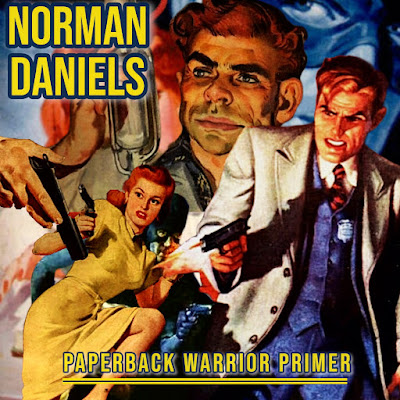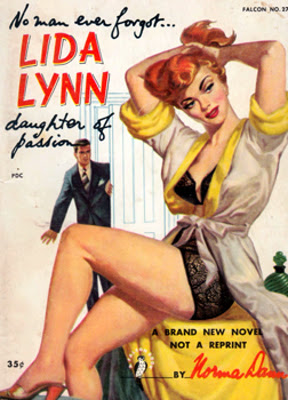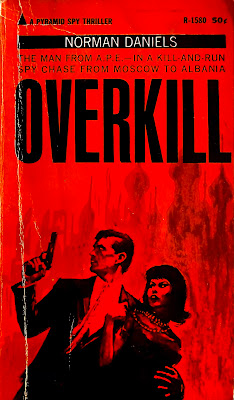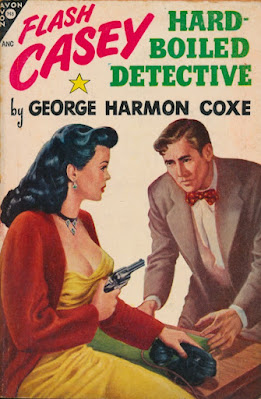Gulick was born in 1916 in Kansas City, Missouri. As a child, Gulick was an avid reader with weekly trips to the library. By the age of five he was reading Zane Grey and pulp western magazines. In high school he wrote a story modernizing Julius Caesar with a gritty underworld of Chicago gangsters. He graduated high school in 1934, a time when America had been thrust into the Great Depression. Gulick delivered newspapers, did collections on delinquent utility bills, and worked at a drug store to help the family make ends meet.
Gulick enrolled at the University of Oklahoma, played baseball, and as a sophomore he entered a writing competition and saw his poem win top prize. During college, Gulick worked as a power line installer and also took a job selling appliances for Montgomery Ward. Both of these jobs expanded Gulick's world and allowed him to see a good portion of the Midwest. Hoping to achieve a career in writing, Gulick entered a Professional Writing School in 1940 and he sold his first story for $10 to a law officer magazine titled The Peace Officer. He then reached out to Popular Publications in New York about a western story he wrote. They published the short, “The Kid That Rode with Death”, in New Western Magazine and paid him $30. At this point Gulick considered himself to be a full-fledged professional writer.
Gulick moved to Brownwood, Texas to be a caretaker for a couple's cabin on Lake Brownwood. It was here that he had the opportunity for solitude, a time he used to polish up on his writing and to get completely devoted to his style. He wanted to write for the slick magazines. He later spent a lot of time with pulp writer Foster Harris. It was Harris that encouraged Gulick to use his experiences installing power lines to write stories about hardened blue-collar working men. Harris explained that he used his own work experience in the oil fields to pen stories in Argosy, Blue Book, and Adventure. Gulick took the advice to heart and wrote a story titled “You Gotta Be Hard” about a lineman who saves a fellow worker from being electrocuted. He sold it to Adventure for $75 and it was published in their August 1942 issue. These stories are what Gulick refers to as his "high-line stories" about the dangerous industry and hardened men that worked on the power lines. That same year he had his story “The Saga of Mike Shannon” published in Liberty Magazine. The publisher paid him $350 for the story, which was his biggest payout to date.
Gulick was classified as 4-F during World War 2 due to his bout with Polio years before the war started. In 1943, Gulick moved to New York City so he could be closer to the editors and publishers he was dealing with. By this point Gulick had sold stories to Big-Book Western, .44 Western, Ace-High Western, Texas Rangers, 10 Story Western, Liberty, and Adventure.
Gulick became acquainted with Rogers Terrill who was working as an editor for Henry and Harry Steeger, the owners of Popular Publications. At the height of the pulp boom the Steegers had 33 magazines circulating. Each magazine sold on average 200,000 newsstand copies for a dime each, so the difference between showing a profit and incurring a loss was small. According to Gulick's autobiography, the Steegers were earning about $300 net profit per month on each magazine. Their top western writer was Walt Coburn. He had a story in just about every western magazine - either a 25,000 word novel, a 12,000 word novelette, or a 5,000 word short story.
Rogers Terrill once sent Gulick a letter stating that his stories were good and that they would continue fetching on average of $280. He explained they were competent but not terribly original. He encouraged Gulick to stop writing run of the mill pot-boilers and to use his talent to write better work. Gulick went back to thinking of himself as more of a slick writer and found more stories being published in Liberty and Saturday Evening Post through the 1940s and 1950s. He was also published in Esquire, Blue Book, Collier's, and Nation's Business. By 1944, Gulick found that he had enough of New York and had met and introduced himself to enough publishers and editors. He first moved to Oklahoma before relocating to Tacoma, Washington. From there he continued to sell to Liberty magazine making $750 per story. The rejects from Liberty funneled down to the pulp magazines at less money.
In 1946, Gulick discovered something really interesting about a Lone Ranger comic strip that was running in Seattle's Post-Intelligencer paper. The Lone Ranger story was plagiarized from a Gulick short published in 10 Story Western Magazine. He cut out the strips each day until he had the whole story and then mailed it to Popular Publications who agreed that it was plagiarism. Eventually, the Lone Ranger's legal firm settled with Gulick paying $250 both to him and Popular Publications. In a funny send off to the settlement, Gulick volunteered to write Lone Ranger stories but his request was ignored.
Gulick met his wife while working as a house manager for a Tacoma Theater Company and the two moved to New York. After meeting with the editor of Saturday Evening Post, Erd Brandt, Gulick was pitched the idea of writing his first serial. Gulick knew that was huge money as Ernest Haycox and Luke Short had both earned upwards to $50,000 for a serial. Brandt wanted a historical Pacific Northwest setting for the serial. In his research, Gulick became fascinated with the history of the emigrants into the Washington and Idaho Territories from the Oregon Trail Days. Gulick used the concept to write an 80,000 word novel titled Bend of the Snake. It was Gulick's first full-length novel, however when he pitched it to the Post as a serial they rejected it for being too long. He submitted the novel to Doubleday but it was rejected for a lack of violence. Houghton Mifflin published the book in 1950 and Gulick received a $5,000 movie option. Universal-International bought the film rights, changed the title to Bend of the River, and cast James Stewart in the lead role.
Gulick settled into writing more full-length novels including A Drum Calls West and A Thousand for the Cariboo. Around this same time an anthology of Gulick's mountain man western short stories was collected into an omnibus paperback titled The Mountain Men.
In 1953. Gulick joined the Western Writers of America, the brainchild of author Nelson Nye. In 1955 Gulick ran for President of the organization, a position he held in 1956 and 1957.
Up until the late mid-1950s, Gulick's novels were being published as hardcovers. But, Popular Library offered Gulick the opportunity to write paperback originals. The author wrote Showdown in the Sun, a paperback purchased by Famous Artists, a Hollywood Film company that paid $13,500 for the book. Gulick also began selling rights to his short stories to television shows. In 1961, Gulick sold his story "Where the Wind Blows Free" to Saturday Evening Post for $2500. Gulick wrote novels for Doubleday including They Came to a Valley, which won the Cowboy Hall of Fame Western Heritage Award as Best Western Historical Novel of the Year and Hallelujah Trail, which the Mirisch Brothers bought film rights for $85,000. The movie was released in 1964 and starred Burt Lancaster, Donald Pleasance, and Brian Keith.
Gulick also flourished in the non-fiction realm as well. He wrote the books Snake River Country and Chief Joseph Country as non-fiction historical accounts. Gulick also wrote a western for Doubleday titled Trails West about a gold mine in Hells Canyon and anti-Chinese riots in the 1880s. The book, which was published in 1979, did well but hinted to Gulick that the western book market had dwindled significantly.
In 1988, Gulilck's western trilogy was caught up in a publishing feud between Doubleday and Gulick. The publisher wanted each book to be trimmed from 100,000 words to 85,000. The publisher also disagreed with Gulick's overall title for the trilogy as Northwest Destiny. Doubleday published each of the books in 1988 - the first in May titled Distant Trails, the second in June titled Gathering Storm, and the third in July titled Lost Wallowa. The publisher sold 5,000 copies of each book to libraries without any promotion and then let the books go out of print. Gulick was able to have the rights reverted back to him from Doubleday. With permission, Berkley published the books in paperback format.
Bill Gulick died at the age of 97 in 2013 in Walla Walla, Washington. In his autobiography, his final conclusion stated this:
"What the world of writing will be in time to come, I cannot predict, other than to say it will change, as it has in my lifetime. Despite the proliferation in the methods of communication that has taken place during the last sixty-four years, the nation as a whole is no more literate now than it was then, when almost everybody who had gone to school at all could read at the fourth-grade level, whereas now we have students in college who cannot do as well. Back in the 1950s, when I complained to Carl Brandt, Sr. about the way the TV monster that had invaded our living rooms was threatening to replace my beloved Saturday Evening Post, he said, 'Don’t worry about it, Bill. What you should understand is that the American public has a great capacity for accepting a new medium of entertainment without forsaking the old.' In any event, it is time for a new generation of writers to replace mine. All I can say is, 'I wish you well'."
Gulick's last published short story was in 1982 and his last book was published in 2008.
You can obtain many of Bill Gulick's vintage books HERE.


.png)



.jpg)



























